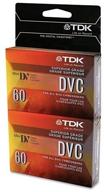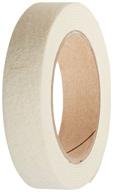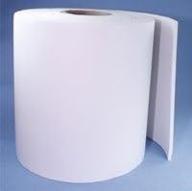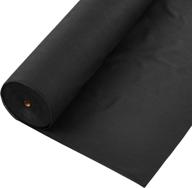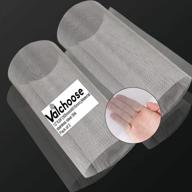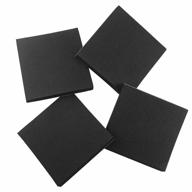Foam Products Provide Versatile Solutions
Foam is an extremely useful material that provides versatile solutions for many everyday needs. The unique properties of foam make it suitable for a wide range of applications.
Top products in 🧼 Foam
What is Foam?
Foam is a lightweight cellular material consisting of a gas trapped within a solid or liquid. The gas cells are enclosed by thin walls made of the solid or liquid material. This structure gives foam some unique properties compared to solid materials.
- Low density - Foam is very lightweight due to the gas cells taking up volume.
- Cushioning - The gas cells compress to absorb shock and vibration.
- Insulation - The gas cells resist heat transfer.
- Buoyancy - The enclosed gas gives foam materials flotation properties.
- Sound absorption - Foam absorbs and dampens noise vibrations.
Types of Foam
There are various types of foam materials made from different base substances.
| Foam Type | Made From |
|---|---|
| Polyurethane foam | Polyols and diisocyanates |
| Polystyrene foam | Styrene monomers |
| Phenolic foam | Phenol and formaldehyde |
Each foam type has slightly different properties suited to certain applications.
Another interesting products
Uses of Foam
The versatility of foam makes it suitable for many common uses:
- Cushioning Material
- Mattresses
- Pillows
- Furniture padding
- Packaging protection
- Thermal Insulation
- Building insulation
- Refrigeration
- Piping insulation
- Sound Absorption
- Studio foam panels
- Noise barriers
- Flotation Devices
- Life jackets
- Boat hulls
- Kickboards
As you can see, foam products provide versatile solutions for many everyday needs. The next time you use a foam product, appreciate the useful properties it possesses!
Foam is Lightweight Yet Strong
One of the most useful properties of foam materials is that they are extremely lightweight while still providing strength. The cellular structure of foam gives it this unique combination of low density and load-bearing capacity.
The Cellular Structure of Foam
Foam consists of a mass of small gas bubbles or cells enclosed within a solid or liquid substance. This cellular structure is what makes foam lightweight:
- The enclosed gas cells take up volume but contribute very little mass.
- The solid or liquid walls separating the cells are thin and lightweight.
- Overall density is low because gas cells occupy major volume.
Despite the low density, the cellular structure also provides strength:
- Walls resist deformation when load is applied.
- Cells compress to absorb energy.
- Closed-cell foams resist fluid flow between cells.
Density and Strength Comparison
Let's compare the density and compressive strength of foam versus solid rubber:
| Material | Density (kg/m3) | Compressive Strength (MPa) |
|---|---|---|
| Polyurethane foam | 25 | 0.03 |
| Solid rubber | 1500 | 10 |
As you can see, the foam has only 1.7% the density of rubber, yet still exhibits meaningful compressive strength. The foam achieves much greater strength-to-weight ratio.
Applications Utilizing Lightweight Strength
The combination of low density and load-bearing capacity makes foam an excellent choice for many applications:
- Cushioning material - Absorbs shock while remaining lightweight.
- Flotation devices - Provides buoyancy without adding much weight.
- Sound insulation - Reduces noise transmission with minimal mass.
- Packaging - Protects products from damage without making box heavier.
The lightweight yet strong properties of foam make it versatile for meeting the demands of diverse applications. Engineers analyze the density and mechanical characteristics to select the optimal foam material.
So next time you use a piece of lightweight foam, appreciate that it has enough strength to serve its useful purpose!
Foams Suit Many Applications
The unique properties of foam make it suitable for a wide variety of applications across many industries. Foams can be engineered and customized to meet the specific needs of different uses.
Similar products
Key Properties of Foam
Foam possesses some key characteristics that lend well to different applications:
- Low density - Lightweight while providing mechanical strength.
- Cushioning - Absorbs shock, vibration, and impact forces.
- Thermal insulation - Resists conductive and convective heat transfer.
- Acoustic insulation - Absorbs and dampens sound waves.
- Closed cell structure - Resists fluid flow through foam.
Major Applications of Foam
Some major uses that leverage foam's beneficial properties include:
- Packaging - Cushions products against damage.
- Construction - Insulates walls, roofs, and pipes.
- Consumer goods - Provides comfort in mattresses, pillows, furniture.
- Automotive - Absorbs energy in bumpers and interior padding.
- Marine - Floats boats and forms buoyant flotation devices.
- Aerospace - Dampens noise and vibration in aircraft and vehicles.
Customization for Specific Uses
Foam can be tailored in various ways to suit different applications:
- Density - Higher for structural strength, lower for insulation.
- Cell size and geometry - Smaller cells resist airflow.
- Open vs closed cell - Closed cells provide buoyancy.
- Adhesive coatings - Enhance specific properties like fire resistance.
The wide range of formulation options allows the properties of foam to be customized for nearly any application. Foam is a versatile material suited to meet diverse needs across many industries.
In summary, the unique beneficial characteristics of foam make it a primary choice for many applications where low weight, cushioning, insulation, and customization are required.
Foams Make Comfortable Cushions and Bedding
The cushioning property of foam makes it an ideal material for comfortable cushions and bedding. Foam distributes weight evenly and conforms to the body's contours.
Cushioning Properties of Foam
Foam used in cushions and bedding provides excellent cushioning due to its cellular structure:
- The gas cells compress when a load is applied.
- The cell walls bend and flex to distribute force.
- The compression absorbs impact and shock.
This cushioning action provides comfort by reducing pressure points on the body.
Types of Foam for Cushioning
Different types of foam provide varying degrees of softness and support:
| Foam Type | Properties |
|---|---|
| Latex foam | Springy, responsive, contouring |
| Memory foam | Slow response, body conforming |
| Polyurethane foam | Varied density and firmness |
Foam Cushion and Bedding Applications
Foam is used extensively in cushioning for comfort:
- Mattresses - Layered foam provides support and conforms to shape.
- Pillows - Shredded foam allows adjustable fill and softness.
- Furniture - Foam cushions and padding increase comfort.
- Car seats - Foam manages vibration and improves ergonomics.
Memory foam is especially useful for bedding as it molds to the sleeper's body.
Benefits of Foam Cushions and Bedding
Key benefits of using foam for cushioning include:
- Even weight distribution to reduce pressure points.
- Ability to conform to body shape and position.
- Motion isolation for undisturbed sleep or sitting.
- Hypoallergenic properties of some foams.
- Customizable firmness and density.
In summary, foam makes an excellent cushioning material to provide comfort in bedding, furniture, and other applications where reducing pressure is desirable.
AFFF Foam Replacement
AFFF foam replacement is a topic of concern for many facilities and fire departments due to the environmental and health risks associated with AFFF. Foam manufacturers have been working on possible replacements for AFFF for over a decade, and there are now dozens of foam products on the market that claim to be made without fluorine, a key ingredient in AFFF that is also a source of PFAS. Fluorine-free foams (F3) represent an option for facilities and fire departments looking to replace AFFF, but their widespread adoption has been limited by the products' historical inability to conclusively meet the U.S. specifications. Facilities transitioning to F3 should plan sufficient time for product testing and personnel training, and should communicate the absence of PFAS-containing foam to potential mutual aid partners to avoid inadvertent deployment of PFAS-containing foam. F3 products are not drop-in replacements for legacy or modern AFFF, and existing equipment should be evaluated for compatibility with the new foam. High-density water applications and non-fluorinated foam options that do not contain PFAS chemicals are alternative fire suppression systems that can be considered as replacements for AFFF.
What Are The Alternatives To AFFF Foam??
There are several alternatives to AFFF foam that can be used for firefighting. Here are some of the most common alternatives:
- Fluorine-Free Fire Fighting Foam (F3)
- Dry Chemical Agents
- C6 Firefighting Foam Concentrates
- High-density water applications
- Non-fluorinated foam options that do not contain PFAS chemicals
Fluorine-free foams (F3) are a popular alternative to AFFF foam, but their widespread adoption has been limited by the products' historical inability to conclusively meet the U.S. specifications. Dry chemical agents are another safe, PFAS-free alternative to AFFF that use a pressurized, dry chemical powder to extinguish fires and are incredibly effective. C6 firefighting foams work like AFFF but with a more advanced formula of concentrates that are less harmful to the environment. High-density water applications and non-fluorinated foam options that do not contain PFAS chemicals are alternative fire suppression systems that can be considered as replacements for AFFF. Facilities transitioning to F3 should plan sufficient time for product testing and personnel training, and should communicate the absence of PFAS-containing foam to potential mutual aid partners to avoid inadvertent deployment of PFAS-containing foam.









